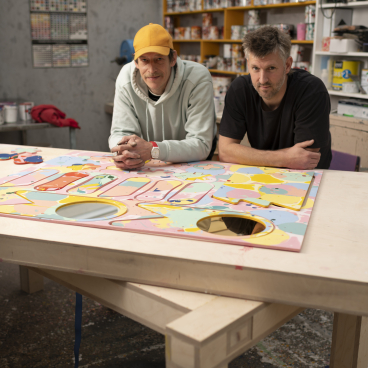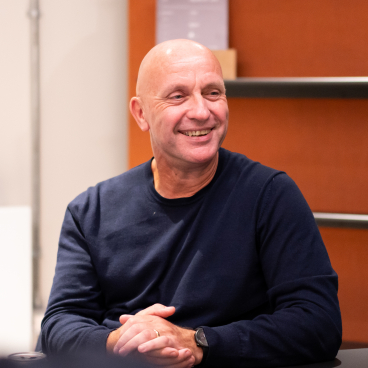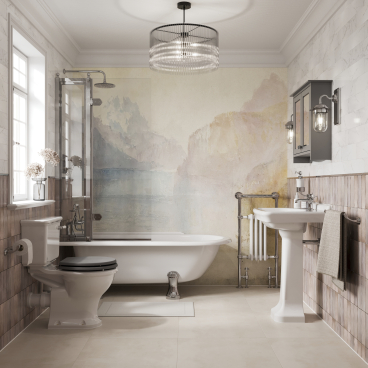Our highlights from London Craft Week 2024.
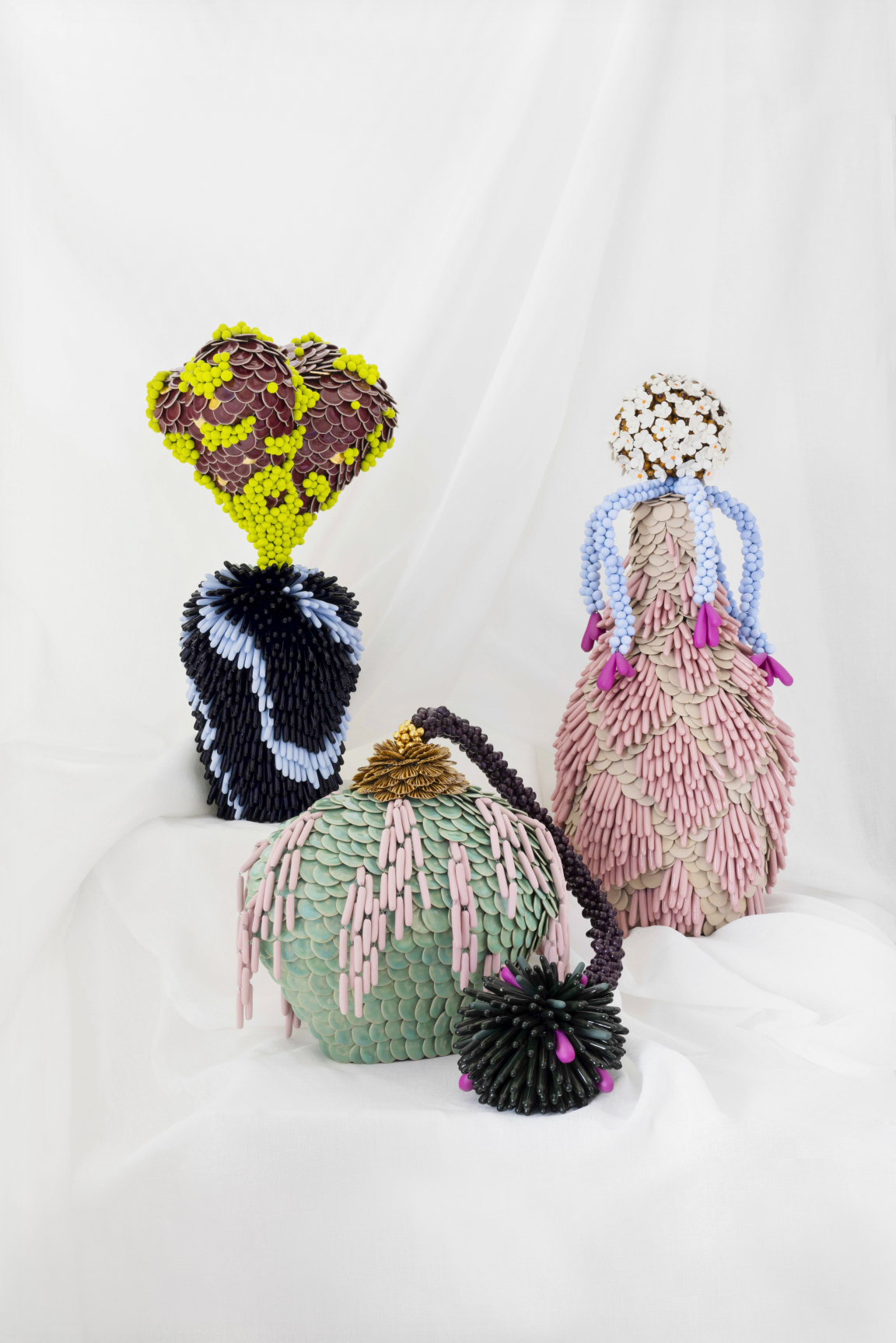
Marianne Huotari. Photography by Anna Autio
As degree show season comes to a close, and this year’s budding designers turn to seeking job opportunities across the creative industries, we felt it was also important to shine a spotlight on those now pursuing their creative passions full time, as spotted at London Craft Week.
Spanning bulrush weaving, to furniture making, textiles, and even digital craft, our London Craft Week highlights are varied, with a mixture of both emerging and established makers committed to their individual craft disciplines.
Continuing our commitment to the up-and-coming and hot on the heels of our top spots at New Designers 2024: Part One & Two, we hope the below instils a sense of optimism in 2024’s graduating cohort currently making moves to embark on their own creative pursuits post-university.
Toast New Makers: Will Nock
One of our first stops at this year’s London Craft week was Toast’s New Makers showcase, situated in its Notting Hill shop.
Toast celebrated its sixth year of its New Maker programme, in which it offers business and marketing advice, as well as a respected platform to sell their pieces, with full profits returned to the makers. From furniture making to hand-blown glass, each piece carefully selected for Toast’s 2024 showcase is handmade to order.
One of this year’s makers on display was Will Nock, a furniture designer and maker, based out of a small workshop on the Cornish coast. Beginning with locally sourced wood, Will uses a selection of traditional wood craft hand tools to shape the material into a myriad of functional pieces that pay homage to the textures and forms he finds on the rugged coastline.
The exposed joinery and tool marks evident on his finished pieces provide context to the slow and honest process behind the pieces, evoking a sense of calm and authenticity for schemes with considered interiors.
Click here to discover more about Will’s practice.
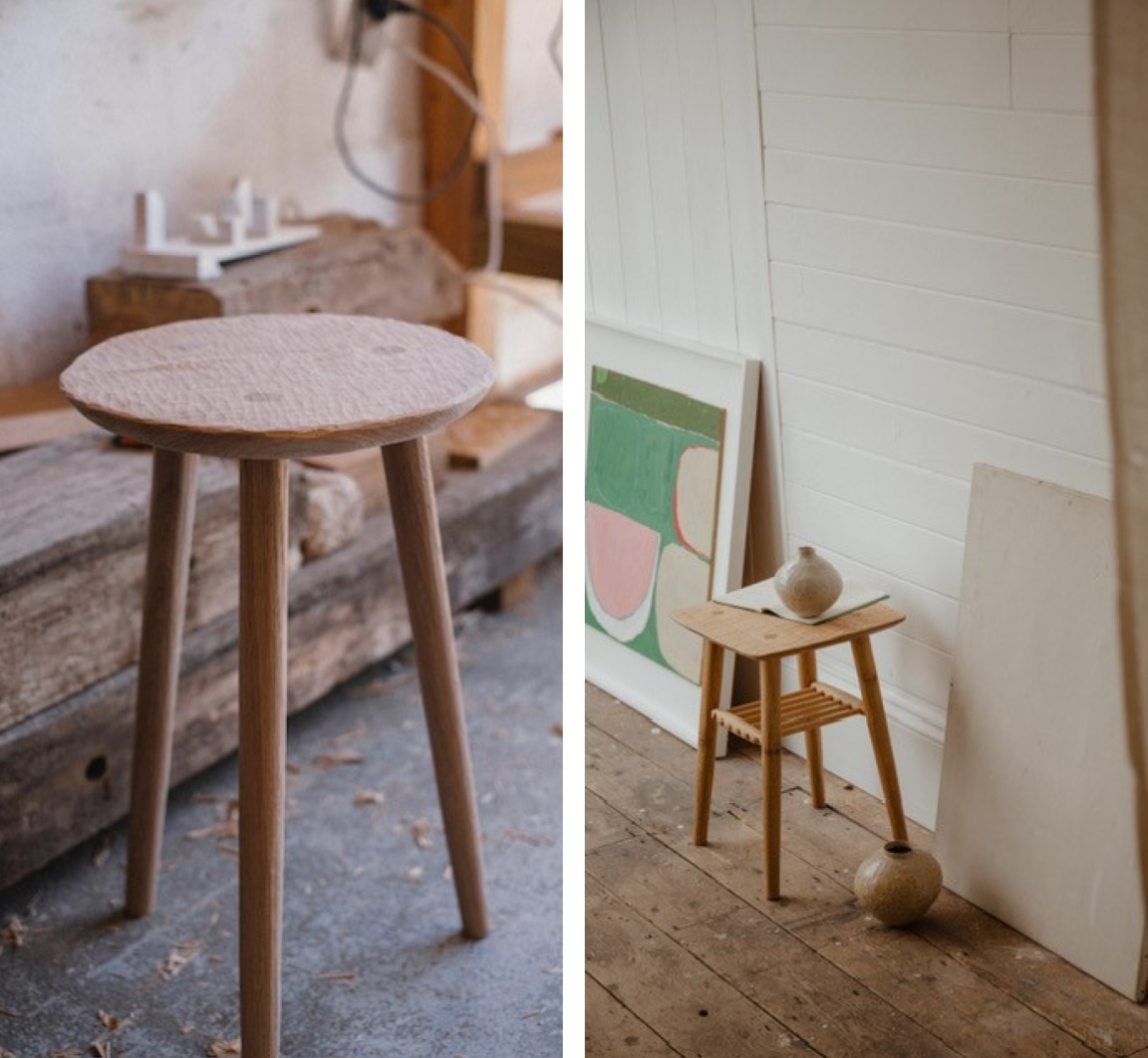
Will Nock
Toast New Makers: Felicity Irons of Rush Matters
Felicity Irons of Rush Matters is one of the UK’s last remaining rush weavers. With headquarters down in a 15th Century barn in Bedfordshire, Felicity made a spectacle of her woven, plaited and coiled pieces to create an installation for Toast’s shop window.
Inspired by Toast’s Spring Summer 2024 collection, Outdoor Pursuits, the artisan suspended a number of woven pieces made from English bulrush, harvested from the river Ouse and Nene.
Since founding Rush Matters in the early nineties, Felicity has applied a host of different applications of working with freshwater bulrushes, creating tableware, soft furnishings, furniture, basketry and some of the most sought-after flooring in the world. Deeply connected with the land and in tune with the seasons, Felicity conserves and breathes modern reinvention into a craft that traces back to the Anglo Saxon period.
More information about Rush Matters can be found here.
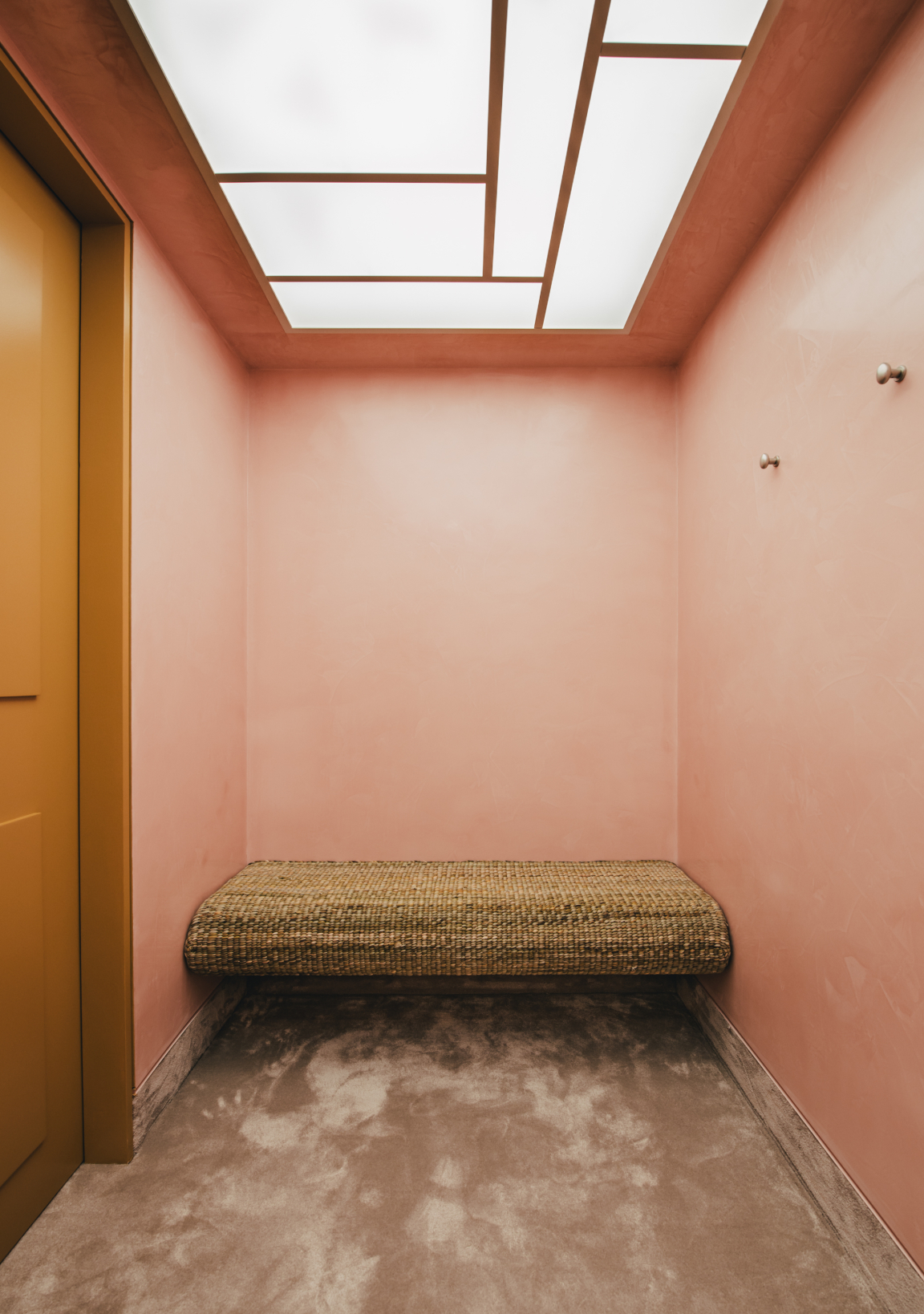
Felicity Irons: Rush Matters
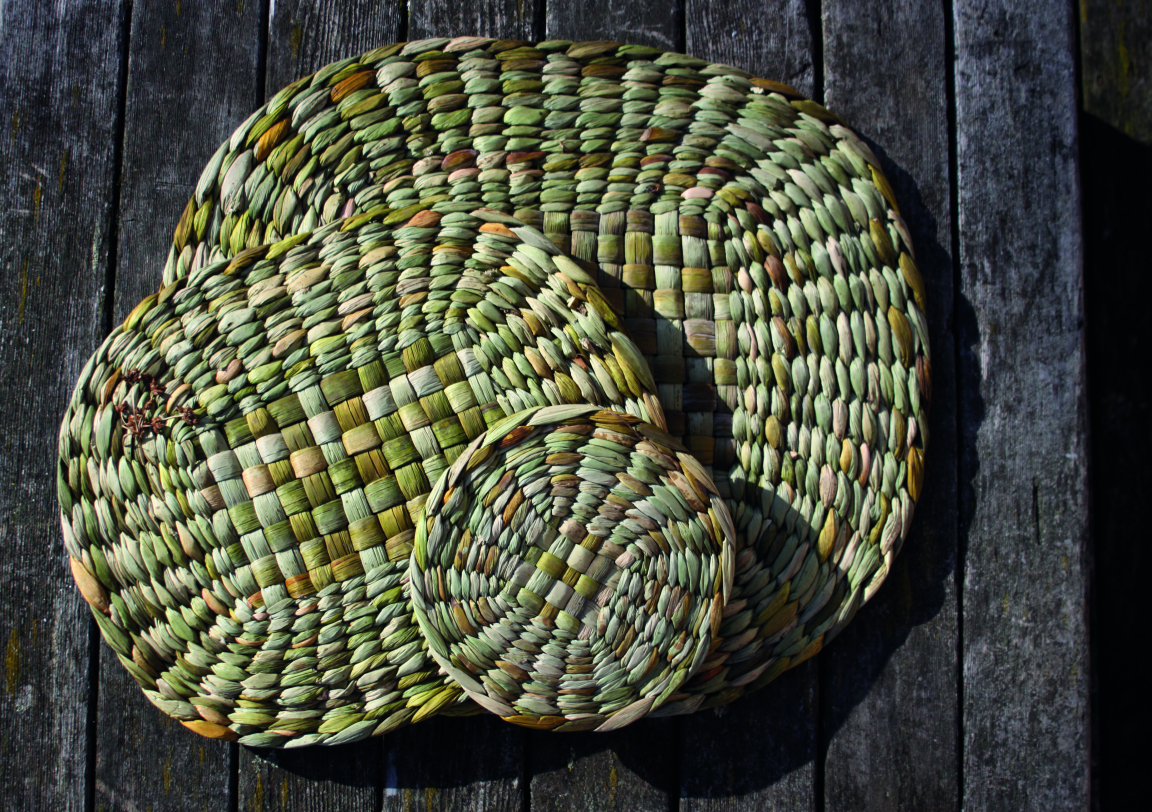
Objects of Contemplation at Hauser & Wirth: Richard McVetis
Objects of Contemplation by Hauser & Wirth gallery champions a plethora of artist-makers from across the UK and Europe, with wide-ranging disciplines - from stone to ceramic, wood, textile, metal and mixed materials. Pieces for the showcase were selected for their one-of-a-kind relationship between material and maker, as well as their associated narratives and aesthetic qualities.
An alumna of Manchester School of Art’s now diminished Embroidery course, Richard McVetis was one of our firm favourites.
Centring his practice around drawing and process, Richard McVetis is a detail-driven hand-embroiderer. In his work he examines the macro and micro, recording time and space through multiple dots, lines and crosses, and probing the subtle differences that emerge through ritualistic and habitual making. Creatively driven by themes of geology, cosmology and the language of time, Richard marks the actions of the hand with - as he describes - "obsessive intricacy".
The grids, cubes, and circles Richard uses to formulate these stitches reflect the urban landscape, the grid, the shifting light, and buildings reduced to simple forms, defined by strong contrasts of light and dark.
When asked about major influences that shape his very individual making process, Richard comments: “Physicist, Carlo Rovelli proposes that Time is granular, not continuous. Drawing freely within set constraints, he gestures towards this granularity. Each seeding stitch is a comma or full stop, a signifier of lived time, an embodiment of thought and patience, and a record of human presence.”
Richard McVetis studied at Manchester School of Art before studying for his MA at the Royal College of Art, where he now teaches. To learn more about Richard’s practice, click here.
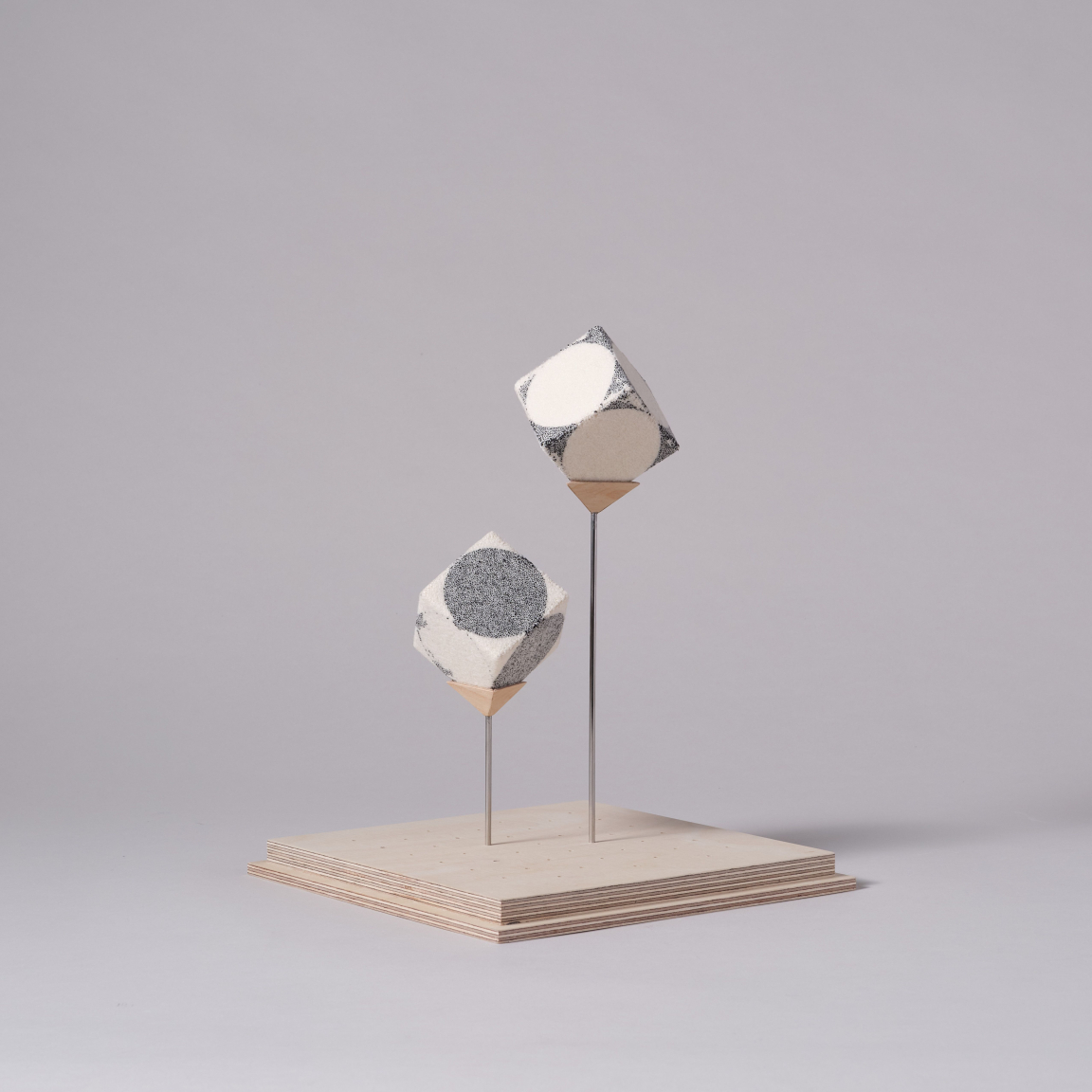
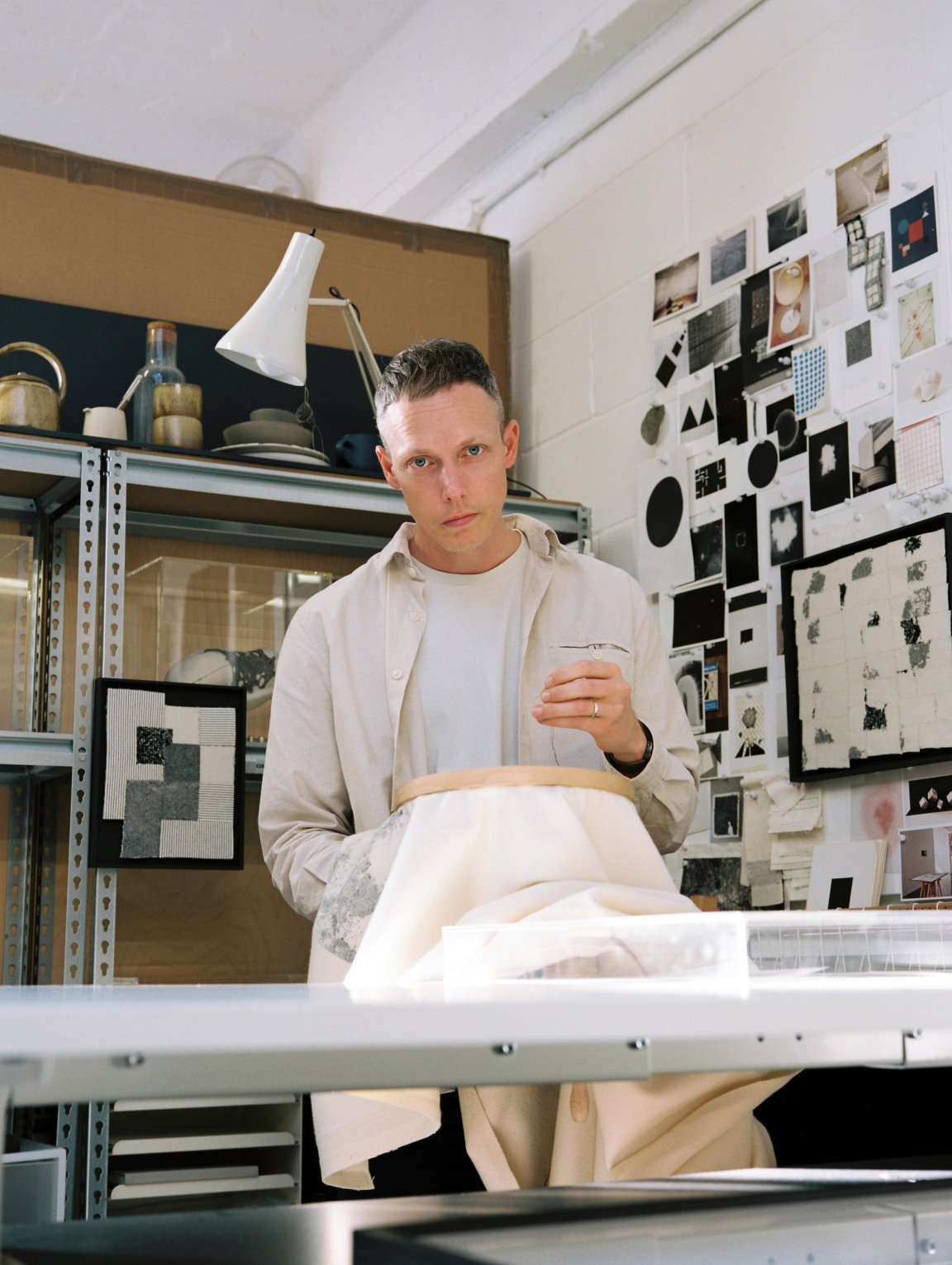
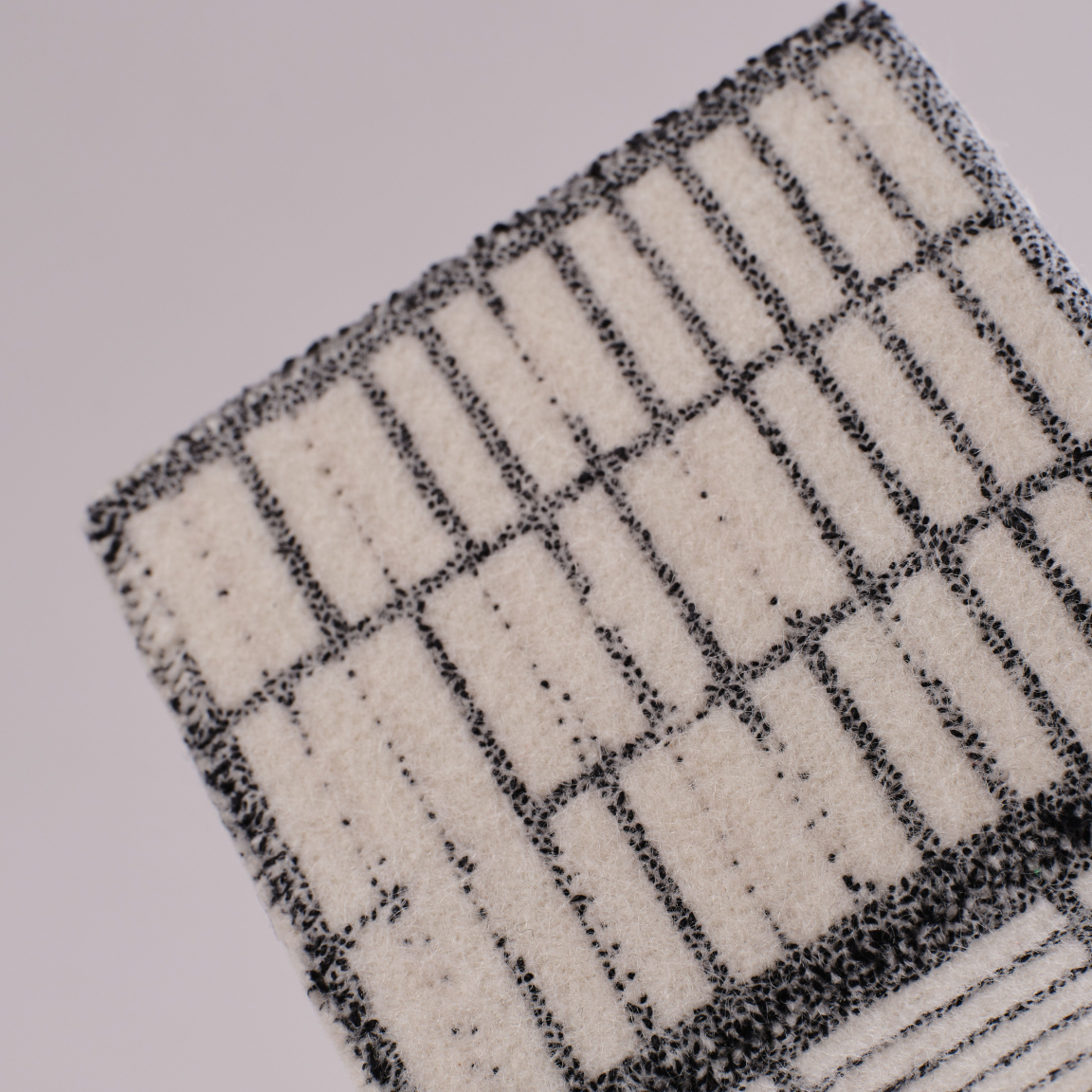
Objects of Contemplation at Hauser & Wirth: Marianne Huotari
Another practitioner with a unique approach to materials and craft is Marianne Huotari - a Helsinki-based ceramic and textile artist.
Marianne reinterprets traditional craft by applying a version of the classic Finnish textile technique, ‘Ryijy’ together with unpredictable materials. ‘Ryijy’ translates to ‘thick cloth,’ referring to a method of loom weaving tapestries that often depict geometric shapes or florals in colours traditionally sourced from plant dyes.
Referencing these traditional Finnish tapestries, Marianne sculpts hundreds of oblong ceramic beads and petals by hand before sewing them onto a metal frame with wire. The beads layer and protrude at will, similar to the woven knots in ‘Ryijy.’
By using ceramics in place of wool-based yarn, her colour palette mimics that of the original wool fibres. Creams and light greens, alongside glowing pinks and blues, populate her tapestries and free-standing sculptures.
Click here to learn more about Marianne’s unique approach to craft, and her portfolio of works to date.
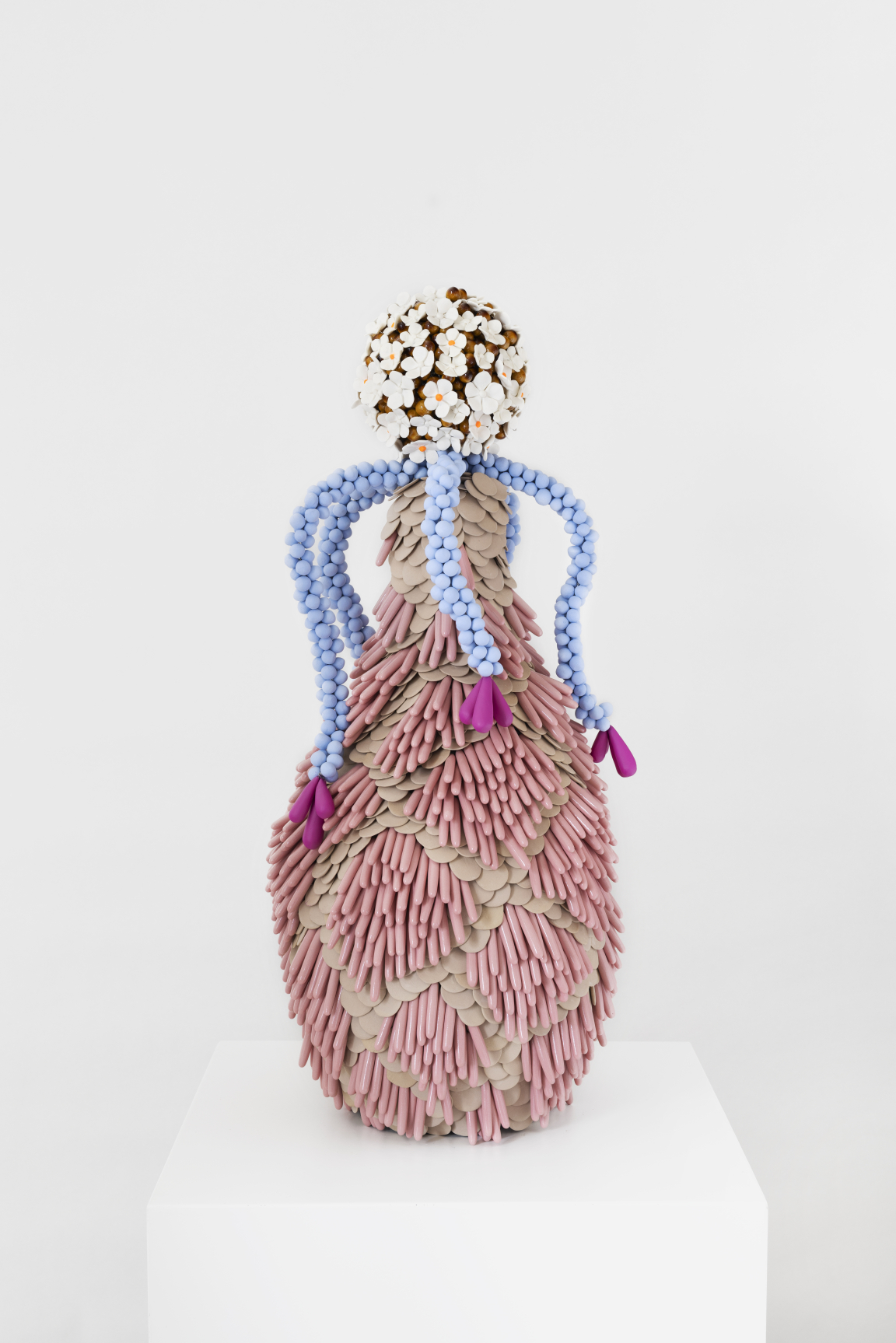
Marianne Huotari: Eau de Fleur. Photography by Anna Autio
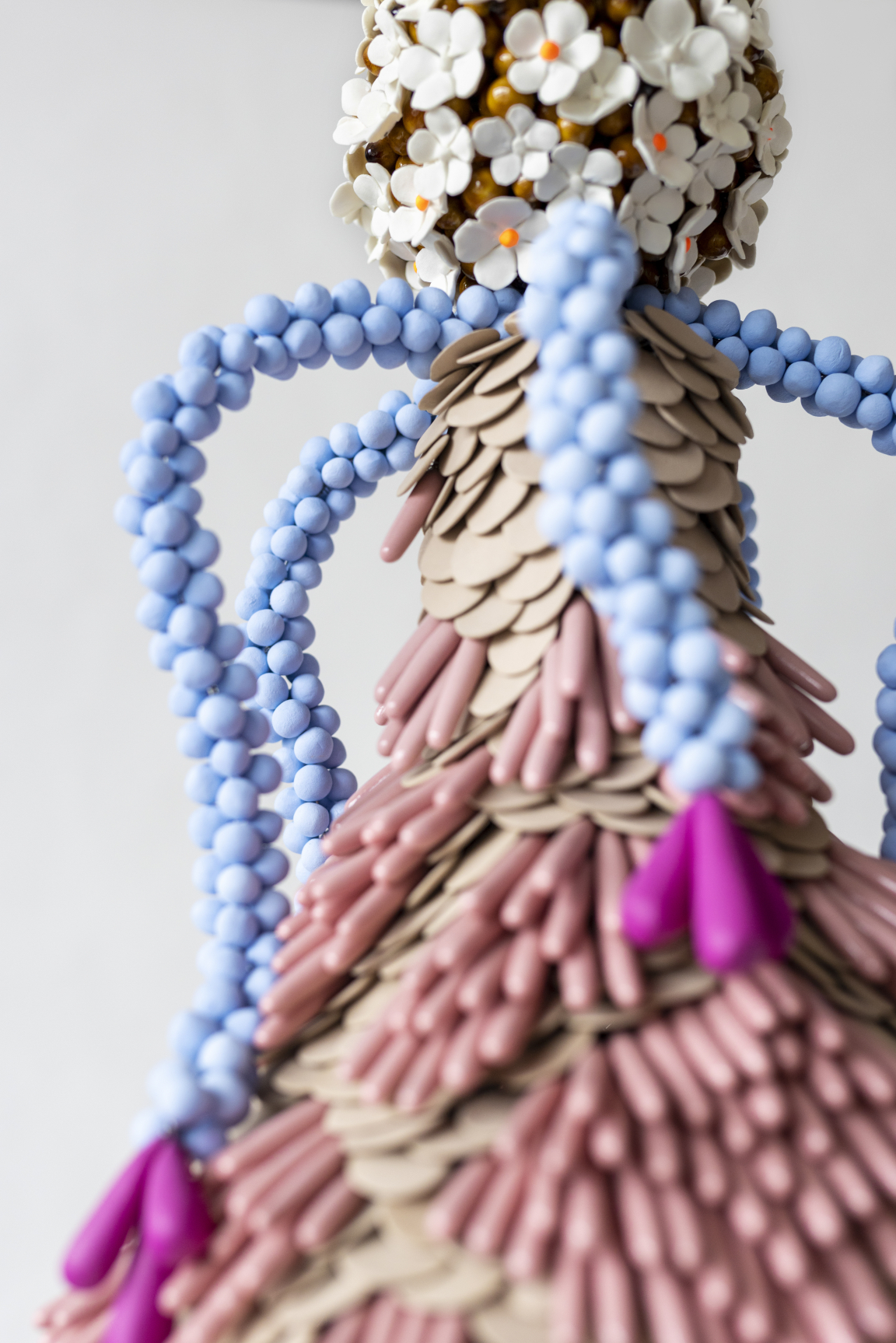
Marianne Huotari: Eau de Fleur. Photography by Anna Autio
Craftworks at Shoreditch Town Hall: IKUKO Iwamoto
Fusing wooden antiques with hand-crafted porcelain pieces, IKUKO Iwamoto brings a distinctive style of making with ceramics to her practice. Whilst visiting her hometown in 2018, the concept for Antique Project emerged, as she discovered old handmade tools crafted by her father. Inspired by their design and structure, she set about incorporating the white hue of porcelain forms into these antique objects.
What sets this project apart from most ceramic works is the process. Rather than starting with just simply a ball of clay, IKUKO begins with an object, prompting her to contemplate its transformation. This almost becomes a collaborative endeavour between herself and the artisans who once crafted these antique objects.
Whilst antique objects play an integral part in IKUKO’s practice, she also creates works by fixing ceramic fish she’s made onto wooden boards. Titled Ghosts from the Sea, this piece is inspired by her upbringing near the seaside in Japan.
Concerned about the serious repercussions of bottom trawling, IKUKO expresses fear of a future where fish become scarce. These artworks depict the spirits of fish whose habitats have been destroyed by human activities like bottom trawling or those needlessly captured and killed due to being unsuitable for the market, or even those lost to plastic pollution. Ghosts from the Sea symbolises the fragility of marine ecosystems and the impact of human actions on aquatic life.
More on IKUKO Iwamoto’s body of work is available to view here.
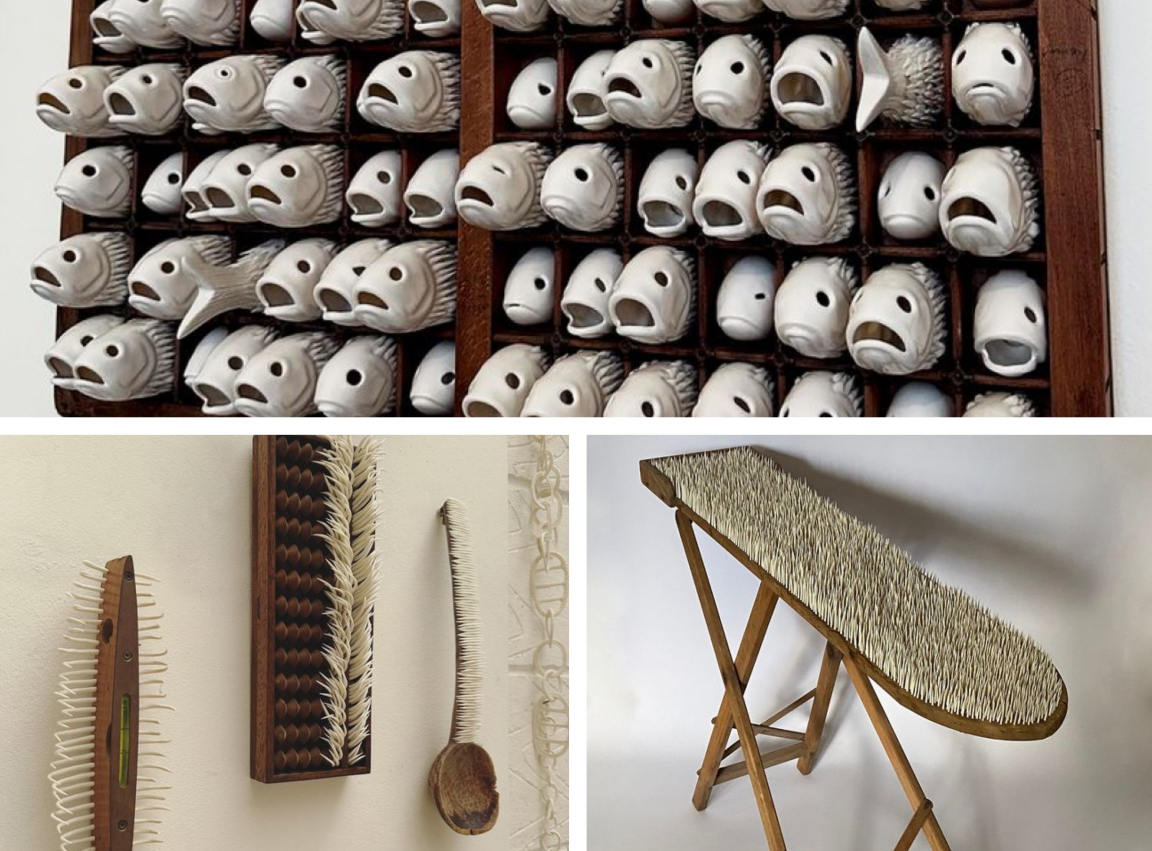
IKUKO Iwamoto
Craftworks at Shoreditch Town Hall: Hannah Lane
Hannah Lane is an award-winning wood and paper artist, employing traditional woodworking techniques to produce tactile, bespoke artworks and objects. Her process combines two materials that began at the same source - wood, a material of longevity, and paper, a short-term material. Hannah recycles the paper into a solid material to create a new shape and texture, thus extending its journey.
As the pieces are hand worked, each material’s grain exposes the marks of Hannah’s working actions, revealing the paper’s imprint as the surface is scraped away. Wood becomes paper becomes wood.
Discover more about Hannah Lane’s paper merged with wood sculptures here.
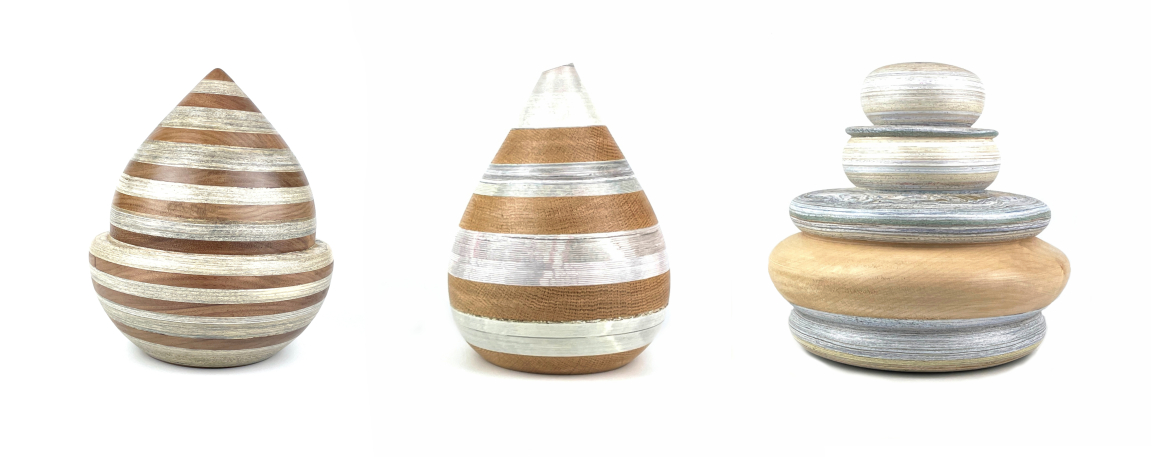
Hannah Lane
Future Icons: Alice Addler
One of our Future Icons top spots, Alice Adler is a ceramic artist specialised in a unique version of Nerikomi, using coloured clay to create vibrant patterns in her hand-built porcelain pieces. This technique involves slicing, punching out, arranging and laminating together various coloured clays to create intricate, detailed designs that are both structural and decorative.
This means the decoration - which at first looks to be painted on the surface - is actually applied through the body of each piece, adding a richness and tactility. And the distinctive process allows Alice to retain clarity and sharpness in the shapes and lines she creates, whilst also permitting the malleability of the clay to have an affect on each piece.
Forever fascinated by the endless colour possibilities that clay and ceramic stains have to offer, Alice loves incorporating various hues and shades into her work - making each piece unique to the last. She is often inspired by patterns and shapes she spots in textiles and architecture, and is often drawn to regular and irregular geometric shapes and repeat patterns, which is evidenced throughout her body of work.
Alice’s pieces are high fired, unglazed, sanded and polished to ensure the surface is soft and silky to the touch. The tactility of these pieces makes you want to pick them up and touch them. Although lending themselves well to be purely decorative pieces, she also uses a ceramic surface sealer to make all pieces waterproof and food safe and thus can be used as functional tableware if desired.
First experimenting with clay during her Design BA in Sydney, Alice learnt to slip cast and throw on the wheel in the UK. She has been making pots for over six years now, whilst also working as a Design & Technology teacher in Sydney, Australia. Alice is currently working from a studio in Bristol, England.
Click here to learn more about Alice’s practice.
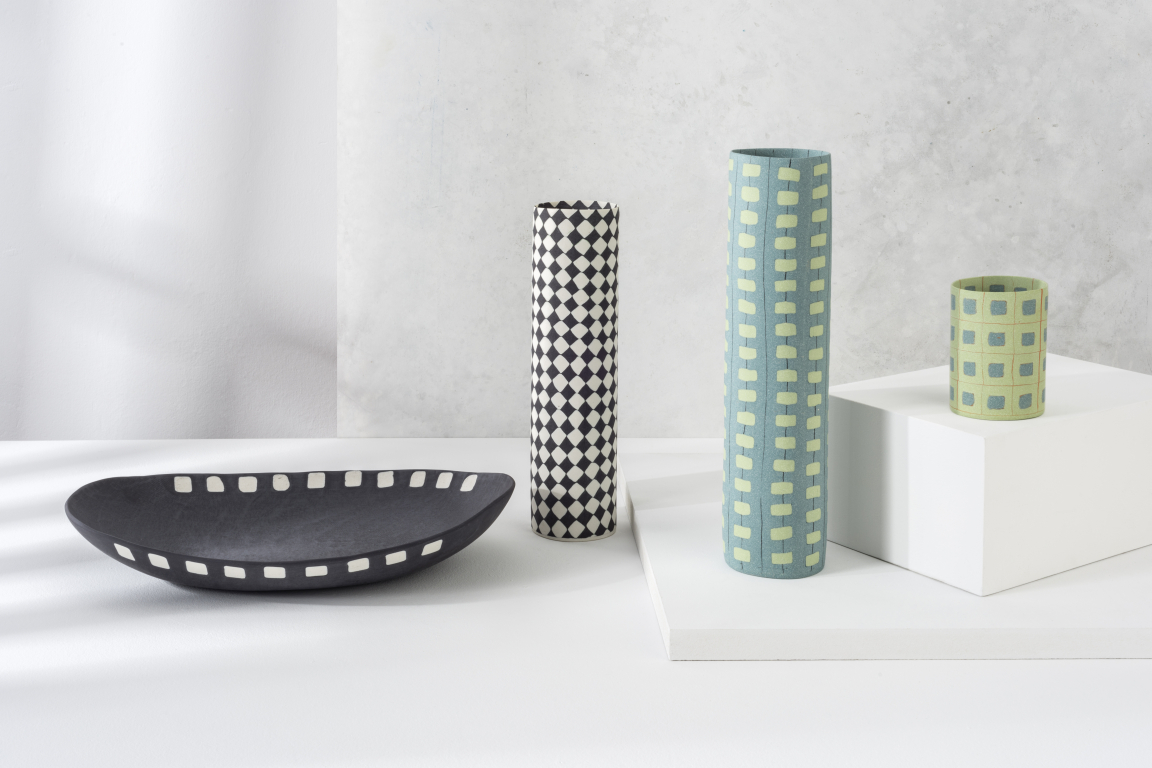
Alice Adler
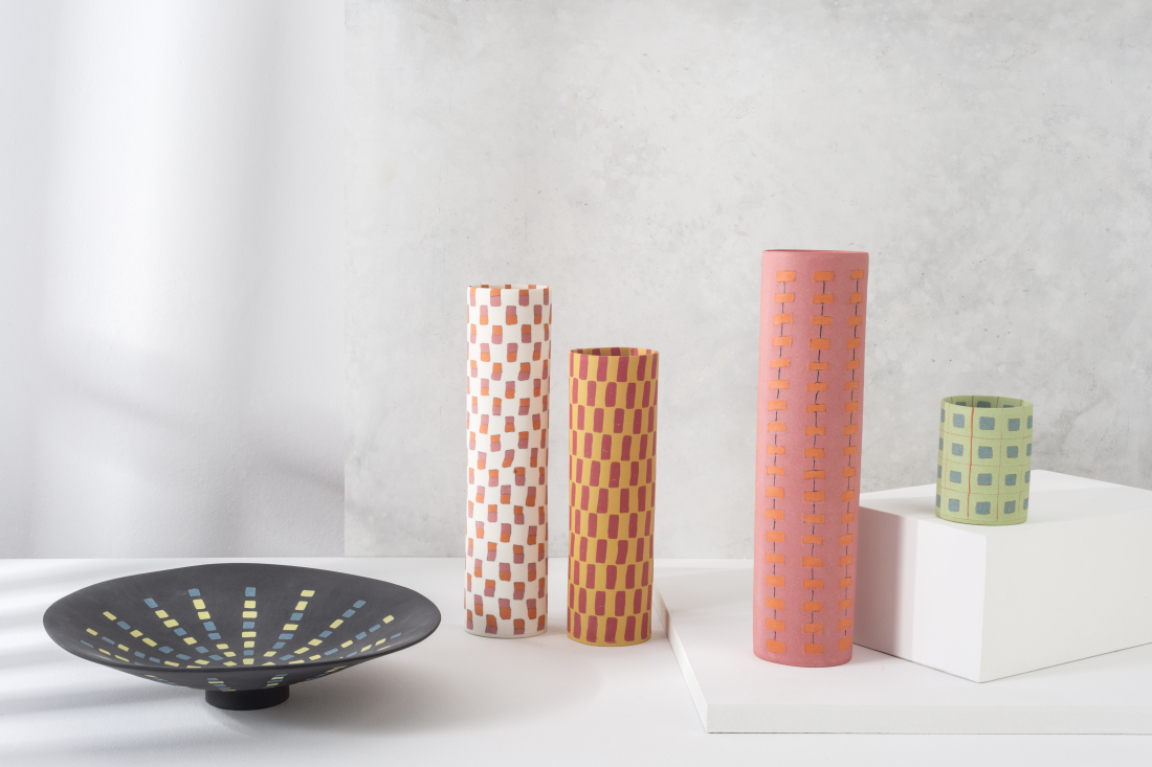
Alice Adler
Future Icons: Katharine Gorham
Textile artist and maker, Katharine Gorham enticed us to the very top of Oxo Tower Wharf’s industrial Bargehouse, showcasing a selection of large scale lino prints and quilted wall hangings from her London-based studio.
In order to inform her own collections, as well as a number of the bespoke interior commissions, Katharine draws on her love of plants to create modern art works to add drama and positivity to interior spaces.
Sketching and hand drawing sparks many of her designs, with sustainability at the forefront of Katharine’s design considerations, from fabric choices to the natural ink used.
At Future Icons Selects, Katharine exhibited part of her latest Indigo Series, a group of large-scale wallhangings, hand printed using a lino technique. These hangings are the final outcomes made from her sketches of her own plants, and observations at Kew Gardens. Giant pieces of natural linoleum (lino) are hand carved using a range of cutting tools, capturing the energy of the process and the flow of the sketch.
Each hanging is then printed using Katharine’s own honed processes. Every consideration is made to sustainability in the making of each giant lino printed piece of craft, from unbleached natural cotton fabric, natural inks made in the UK, FSC certified timber dowels to the use of biodegradable materials in the making process.
Also shown were her handmade quilted hangings, all unique with beautiful colour clashes and found natural fabric creating a bold backdrop. These are slowly crafted and pieced together, the quilted stitching a reaction to the colours and fabrics collected, found and used.
It takes numerous hours of piecing and stitching and physical energy to create each quilted hanging. Each piece is unique. A very slow process producing an heirloom piece of craft. Hung up, it is a dynamic backdrop, reducing noise, creating a mindful interior environment.
Used as a quilt its colour and soft texture enhance the interior environment and mood. Every consideration is made to sustainability in the making of this piece of craft from its slow making, use of natural fabrics including cotton and linen, and natural batting, to the longevity of the piece once made.
The smaller framed artwork pieces are a series of 11, using the same slow piecing and stitching processes, each one unique, natural, made by hand and a reaction to colour and fabric, and framed in wood.
To dive further into Katharine’s textiles practice, click here.
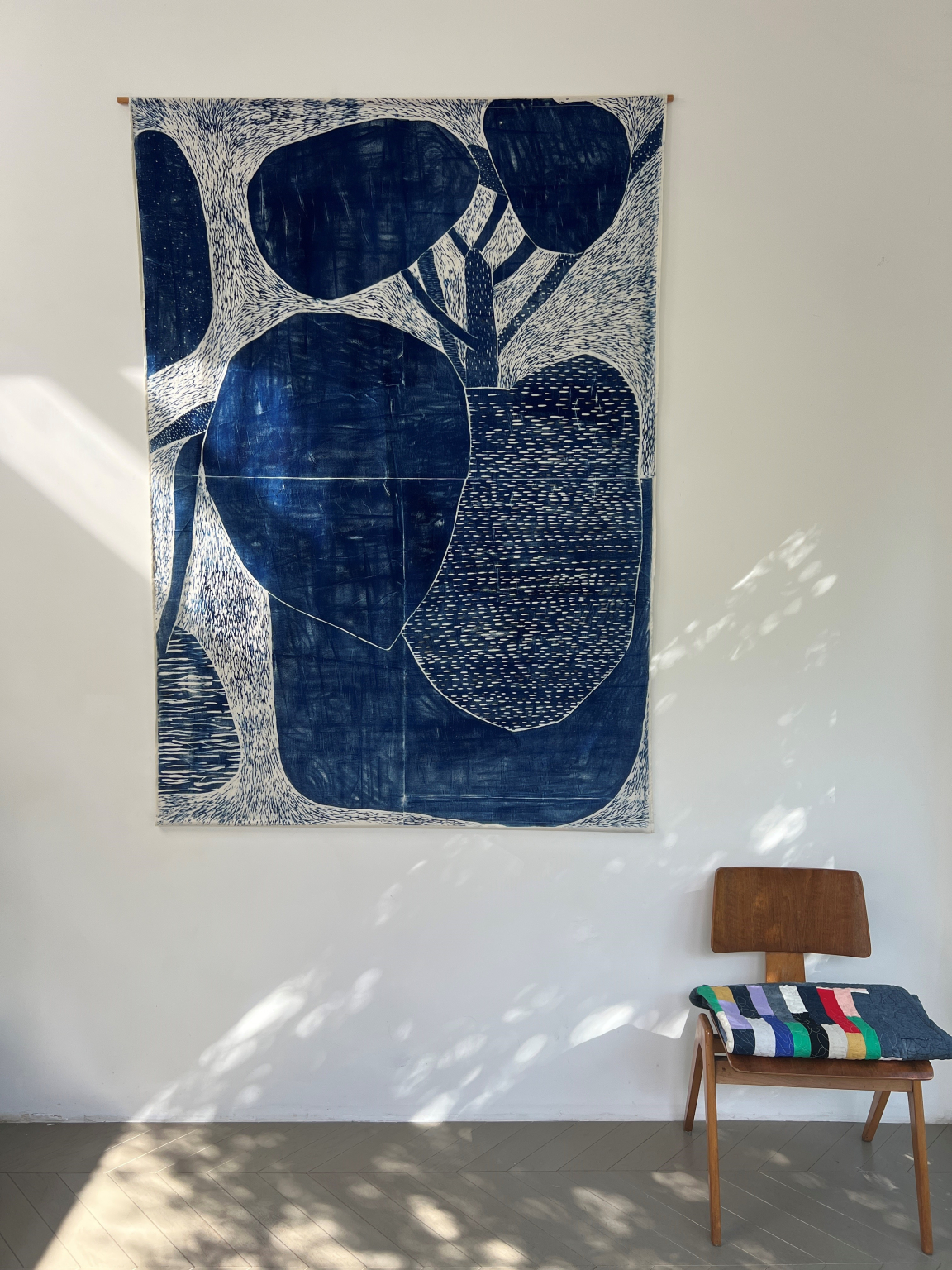
Gorham
Vessel: An exploration into digital craft
In celebration of London Craft Week’s 10th anniversary, TM Studio commissioned Found Studio to create this year’s visual campaign. Championing the adoption of digital tools and making within the craft community, Found carefully combine material, lighting and form to create an ambitious edition of 1,000 unique digital artworks.
The innovative line-up of artworks were divided into five material sets; glazed ceramic embellished ceramic, enamelled metal, fine jewellery, and precious metalwork.
The accompanying exhibition and book broke down the campaign by focusing on the role of digital tools and techniques alongside the passion, skill, and expression inherent in craftspeople, offering a glimpse into a potential future of digital craft. Questioning as to whether craft does truly require direct contact between human hand and materials, Found Studio is rooting for a craft community that embraces digital making.
Explore more about this project here.
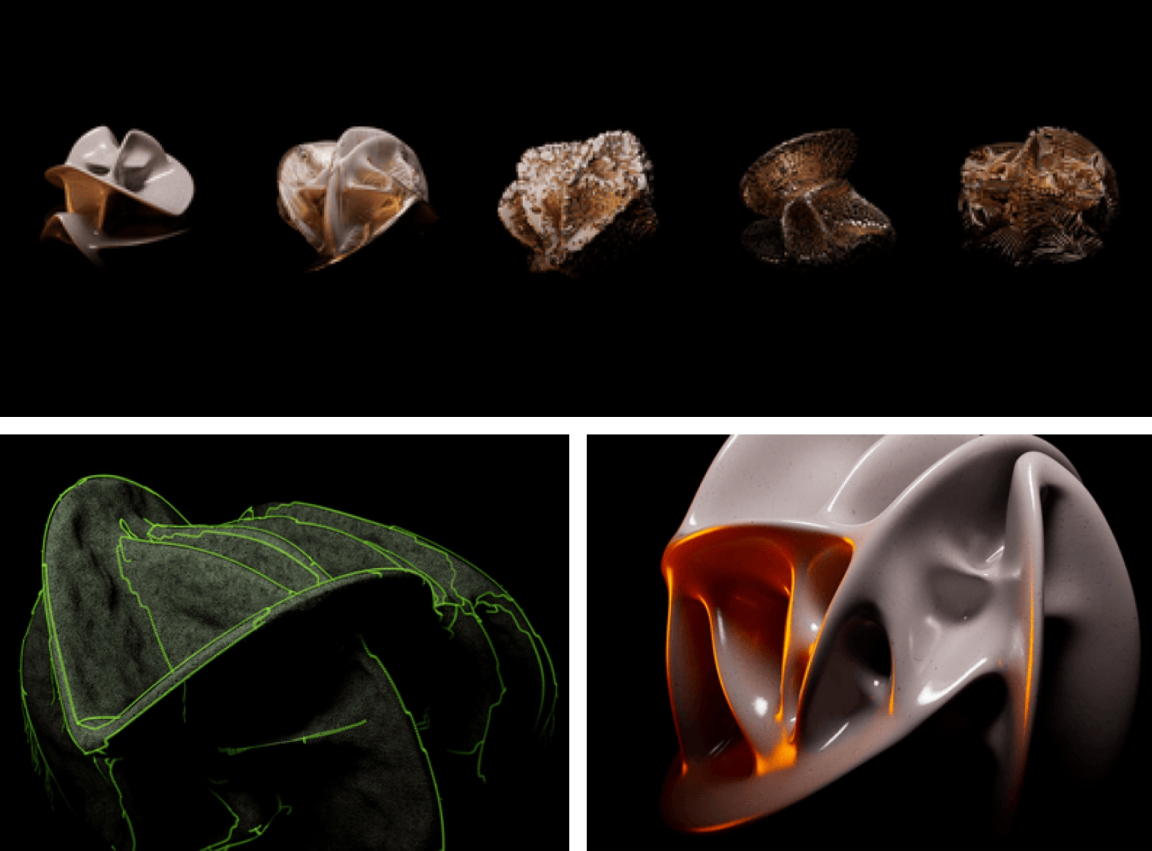
VESSEL: Studio Found


